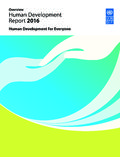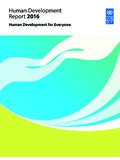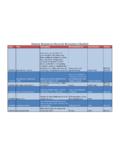Transcription of Human-wildlife conflict in Africa
1 ISSN 0258-6150. FAO. FORESTRY. PAPER. 157. con ict in Africa and management strategies Human-wildlife Causes, consequences 157 Human-wildlife con ict in Africa Causes, consequences and management strategies FAO. Cover image: The crocodile is the animal responsible for the most human deaths in Africa Fondation IGF/N. Drunet (children bathing); D. Edderai (crocodile). Human-wildlife FAO. FORESTRY. PAPER. conflict in Africa 157. Causes, consequences and management strategies F. Lamarque International Foundation for the Conservation of wildlife (Fondation IGF).
2 J. Anderson International Conservation Service (ICS). R. Fergusson Crocodile Conservation and Consulting M. Lagrange African wildlife Management and Conservation (AWMC). Y. Osei-Owusu Conservation International L. Bakker World Wide Fund for Nature (WWF) The Netherlands FOOD AND AGRICULTURE ORGANIZATION OF THE UNITED NATIONS. Rome, 2009.. 5IF EFTJHOBUJPOT FNQMPZFE BOE UIF QSFTFOUBUJPO PG NBUFSJBM JO UIJT JOGPSNBUJPO . QSPEVDU EP OPU JNQMZ UIF FYQSFTTJPO PG BOZ PQJOJPO XIBUTPFWFS PO UIF QBSU . PG UIF 'PPE BOE "HSJDVMUVSF 0 SHBOJ[BUJPO PG UIF 6 OJUFE /BUJPOT '"0.]
3 DPODFSOJOH UIF . MFHBM PS EFWFMPQNFOU TUBUVT PG BOZ DPVOUSZ UFSSJUPSZ DJUZ PS BSFB PS PG JUT BVUIPSJUJFT . PS DPODFSOJOH UIF EFMJNJUBUJPO PG JUT GSPOUJFST PS CPVOEBSJFT 5IF NFOUJPO PG TQFDJGJD . DPNQBOJFT PS QSPEVDUT PG NBOVGBDUVSFST XIFUIFS PS OPU UIFTF IBWF CFFO QBUFOUFE EPFT . OPU JNQMZ UIBU UIFTF IBWF CFFO FOEPSTFE PS SFDPNNFOEFE CZ '"0 JO QSFGFSFODF UP . PUIFST PG B TJNJMBS OBUVSF UIBU BSF OPU NFOUJPOFE . *4#/ . "MM SJHIUT SFTFSWFE 3 FQSPEVDUJPO BOE EJTTFNJOBUJPO PG NBUFSJBM JO UIJT JOGPSNBUJPO . QSPEVDU GPS FEVDBUJPOBM PS PUIFS OPO DPNNFSDJBM QVSQPTFT BSF BVUIPSJ[FE XJUIPVU.]
4 BOZ QSJPS XSJUUFO QFSNJTTJPO GSPN UIF DPQZSJHIU IPMEFST QSPWJEFE UIF TPVSDF JT GVMMZ. BDLOPXMFEHFE 3 FQSPEVDUJPO PG NBUFSJBM JO UIJT JOGPSNBUJPO QSPEVDU GPS SFTBMF PS PUIFS . DPNNFSDJBM QVSQPTFT JT QSPIJCJUFE XJUIPVU XSJUUFO QFSNJTTJPO PG UIF DPQZSJHIU IPMEFST . "QQMJDBUJPOT GPS TVDI QFSNJTTJPO TIPVME CF BEESFTTFE UP . $IJFG . &MFDUSPOJD 1 VCMJTIJOH 1 PMJDZ BOE 4 VQQPSU #SBODI. $PNNVOJDBUJPO %JWJTJPO . '"0 . 7 JBMF EFMMF 5 FSNF EJ $BSBDBMMB 3 PNF *UBMZ . PS CZ F NBJM UP . DPQZSJHIU!GBP PSH. '"0 . iii Contents Foreword v Acknowledgements vi Acronyms vii 1.
5 Introduction 1. A brief history of Human-wildlife conflict 2. Human-wildlife conflict around the world 3. 2. Human-wildlife conflict: the issues 5. Typology of Human-wildlife conflict 5. Causes of Human-wildlife conflict 14. Consequences for humans 25. Consequences for wildlife conservation 32. 3. Human-wildlife conflict management 37. human management 37. Production management 47. Crop or herd management 53. Non-lethal control 54. Lethal control 62. Environmental management 67. 4. Decisional framework 73. Phase 1: investigation 73. Phase 2: problem analysis and decision-making 76.
6 Phase 3: choice and implementation of management options 77. An adaptive process 81. 5. Conclusion 83. Bibliography 85. ANNEX. Scientific names of animals mentioned in this book 97. iv Boxes Box 1 Fatal wildlife attacks in Africa : some figures 6. Box 2 Elephant crop-raiding in Africa 9. Box 3 Bark stripping and its consequences 10. Box 4 Impact of elephants on habitat and sympatric wildlife 13. Box 5 Gender and Human-wildlife conflict 19. Box 6 human activities and wildlife habitat 20. Box 7 Natural hazards, habitat and Human-wildlife conflict 22. Box 8 The seasons, habitat and Human-wildlife conflict 22.
7 Box 9 The link between monospecific tree plantations and bark-stripping baboons 23. Box 10 Possible causes and consequences of the decrease in natural prey hunted by wild carnivores 23. Box 11 The impact of pathology and physiology on Human-wildlife conflict 26. Box 12 Elephants as a threat to food security 28. Box 13 Livestock depredation some figures 30. Box 14 Killing wildlife in retaliation 33. Box 15 Adverse effects of Human-wildlife conflict on wildlife conservation 34. Box 16 Awareness raising: key points 38. Box 17 Some examples of compensation schemes in sub-Saharan Africa 40.
8 Box 18 human Animal Conflict Self Insurance Scheme, Namibia 42. Box 19 Indirect compensation for Human-wildlife conflict: viewing tourism 43. Box 20 Indirect compensation for Human-wildlife conflict: safari hunting 44. Box 21 Indirect compensation for Human-wildlife conflict: Community-Based Natural Resource Management 45. Box 22 Effect of guard animals on predator attacks 48. Box 23 Examples of fences used against carnivore attacks 49. Box 24 Some drawbacks of fencing 51. Box 25 wildlife translocation 60. Box 26 Regulation of bark-stripping baboons by poisoning 64.
9 Box 27 The adverse effect of land-use planning on Human-wildlife conflict 69. Box 28 Establishing zones for wildlife and human activities 70. Box 29 Two examples of zoning around protected areas 71. Box 30 Importance of a Human-wildlife conflict database 74. Box 31 Investigations to be made in cases of Human-wildlife conflict 75. Box 32 An example of integrated decision-making 79. Box 33 Community-based control of problem elephantst 80. Box 34 The event book: an example of simple Human-wildlife conflict monitoring 81. Box 35 Human-wildlife Conflict Collaboration 84.
10 Tables Table 1 Cost of damage caused by bears and wolves in western Europe in 1997 ( ) 3. Table 2 Percentage of total agricultural output reported lost as a result of elephant crop-raiding in some African countries 9. Figures Figure 1 Domestic animals killed by wild predators in the African wildlife Foundation (AWF) Samburu Heartland, Kenya (% of reported deaths) 11. Figure 2 Decision process to determine appropriate management action in areas with human -elephant conflict 78. v Foreword Conflicts between humans and wildlife have occurred since the dawn of humanity.
















